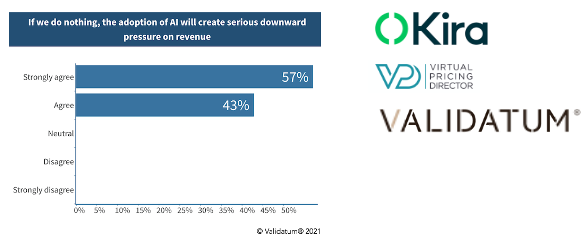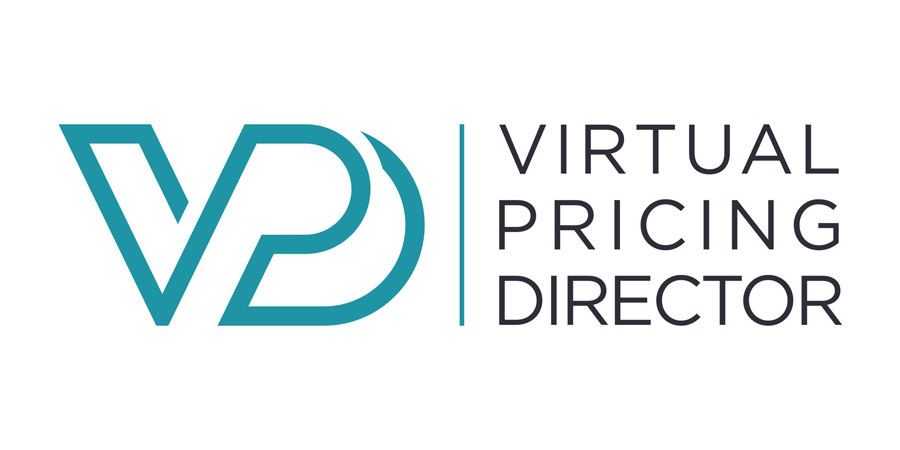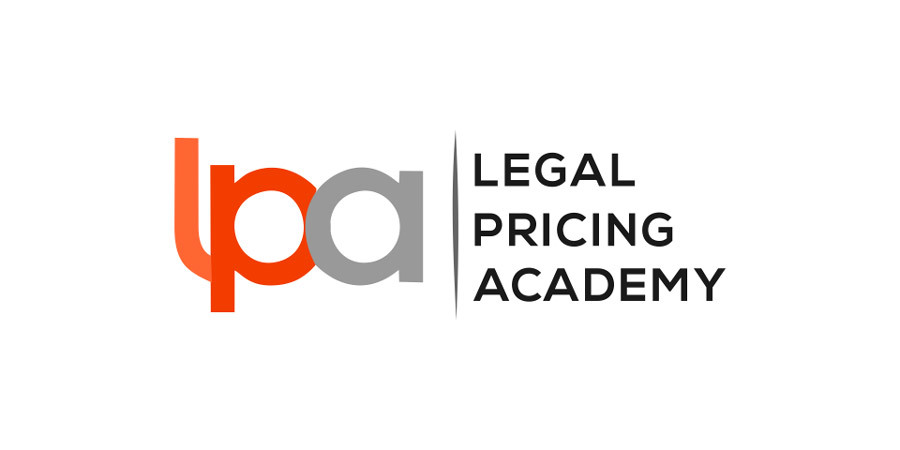These are the results of a recent global survey of Validatum’s law firm clients. They won’t surprise anyone. They were some of the concerns and solutions explored in a webinar we presented yesterday in collaboration with Kira (Chloe Doyle) and John Craske, CMS head of innovation and legal operations.

Law firms face increased pressure to do 'more for less' resulting in rapidly growing interest in and adoption of compelling technology-augmented hybrid offerings: focused on process-oriented work, applied at scale, leveraging technology to produce effective solutions.
For many law firms, this means fewer billable hours. If AI will allow document review for example, in a fraction of the time it used to take, that's someone's billable hours target out the window. The use of AI in legal service delivery is exciting and represents a great opportunity, particularly for early adopters, but it has a vicious sting in the tail. Something will have to change with traditional pricing models.
Without very careful thought around pricing strategy, firms that rush headlong into the new technology run the risk of a double whammy - the cost associated with investing in the technology and some fee earners finding that their bread-and-butter work (rudimentary document review and the like) can be done in a small fraction of the time that they would normally devote to cranking out billable hours.
Result? More expense and less revenue. Not something to get particularly excited about on the face of it.
There are a number of initiatives that we believe that firms could usefully think about either as a precursor to or at the very least in conjunction with the deployment of AI or indeed any technology for that matter that will result in certain work streams being undertaken more efficiently, for which one can almost inevitably read, a reduction in billable hours.
We think that this is a timing issue and that firms are going to need to approach this in two stages.
Stage 1 will involve a number of strategies to protect margins while the more systemic changes are given effect to.
To begin with, we should be cognisant of the pricing life cycle which runs broadly in tandem with the traditional innovation adoption life cycle with innovators, early adopters, early maturity, late maturity and laggards.

The pricing life-cycle equivalent recording the revenue and profit curves follows a similar pattern with introduction, growth, maturity and decline.

Put simply, there is an opportunity for early adopters and innovators to preserve reasonable margins while the use of the technology remains relatively novel and sparsely distributed.
Moving to the endgame, Stage 2 will necessitate systemic change to the way that some services are currently provided. Clients do not mind paying and even paying solidly for the cerebral, tactical, strategic and experience-driven advice capable of being provided by experienced and seasoned partners. They are considerably less willing to pay for things that they regard as procedural and generally ‘low-rent’.
This is likely to see the traditional pyramid inverted. This isn't necessarily a bad thing (unless you are in the early stages of your career) as firms are going to need more and more senior people in order to deliver what clients regard as real value.
From the firm's perspective, this should be recognised as both a problem and an opportunity, the opportunity being for firms to simultaneously offer cost savings and efficiency on the procedural work but take an extremely robust view of pricing work being undertaken by senior people. In so doing, there is the potential to achieve some set-off.
There is an important distinction between doing the same thing more efficiently versus using the technology to do new stuff. The technology will have to be reimagined so that old work is done faster, and new revenue streams are added. It is exciting to see some of the things that firms are already doing in that regard, developing software intended to productise legal solutions.
However, whether you are investing in someone else's technology or building and selling your own, the problem remains the same - how to price it.
Simply doing the same jobs that have always been done but doing them faster and more efficiently will result in a substantial reduction in revenue. One way to address this is to move from low volume, high margin to high volume, low margin.
As with the advent of the Industrial Revolution, the legal tech revolution means that a lot of what we know and take for granted as received wisdom will have to be reimagined. For example, the legal profession still remains firmly wedded to the billable hour as a metric for both management and pricing purposes. Many don’t realise that this is closely aligned with Karl Marx’s Labour Theory of Value, but that’s another story.
Suffice it to say that Marx’s theory and the 6-minute unit are a round peg in a square hole when it comes to pricing legal tech. Amongst other things, we will have to conceive other pricing metrics and value metrics. Examples include Rolls Royce’s TotalCare® model which charges airlines a fixed $ per hour of flying time (worked brilliantly until March 2020!) or Michelin’s TaaS (tyres-as-a-service) fleet program charging a per-mile fee for the use of their tyres – “Michelin's journey from selling tires to selling outcomes.” Brilliant!
There are many initiatives that firms can deploy in both the short and medium term to mitigate the effects of the introduction of technology that achieves greater efficiencies and cost savings from the client's point of view, but which will inevitably financially harm those firms that retain a significant dependence upon hourly billing as the predominant pricing model.

